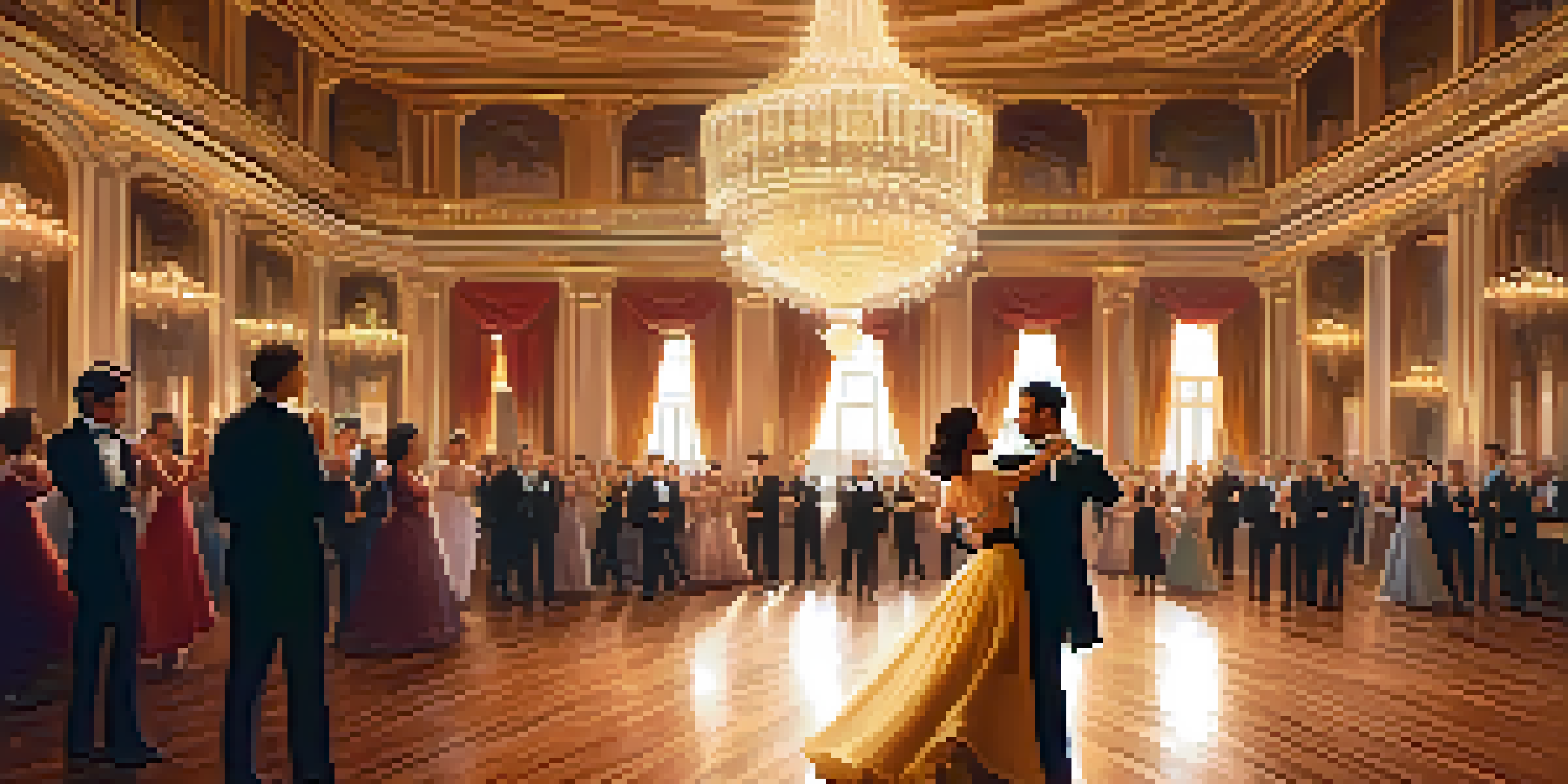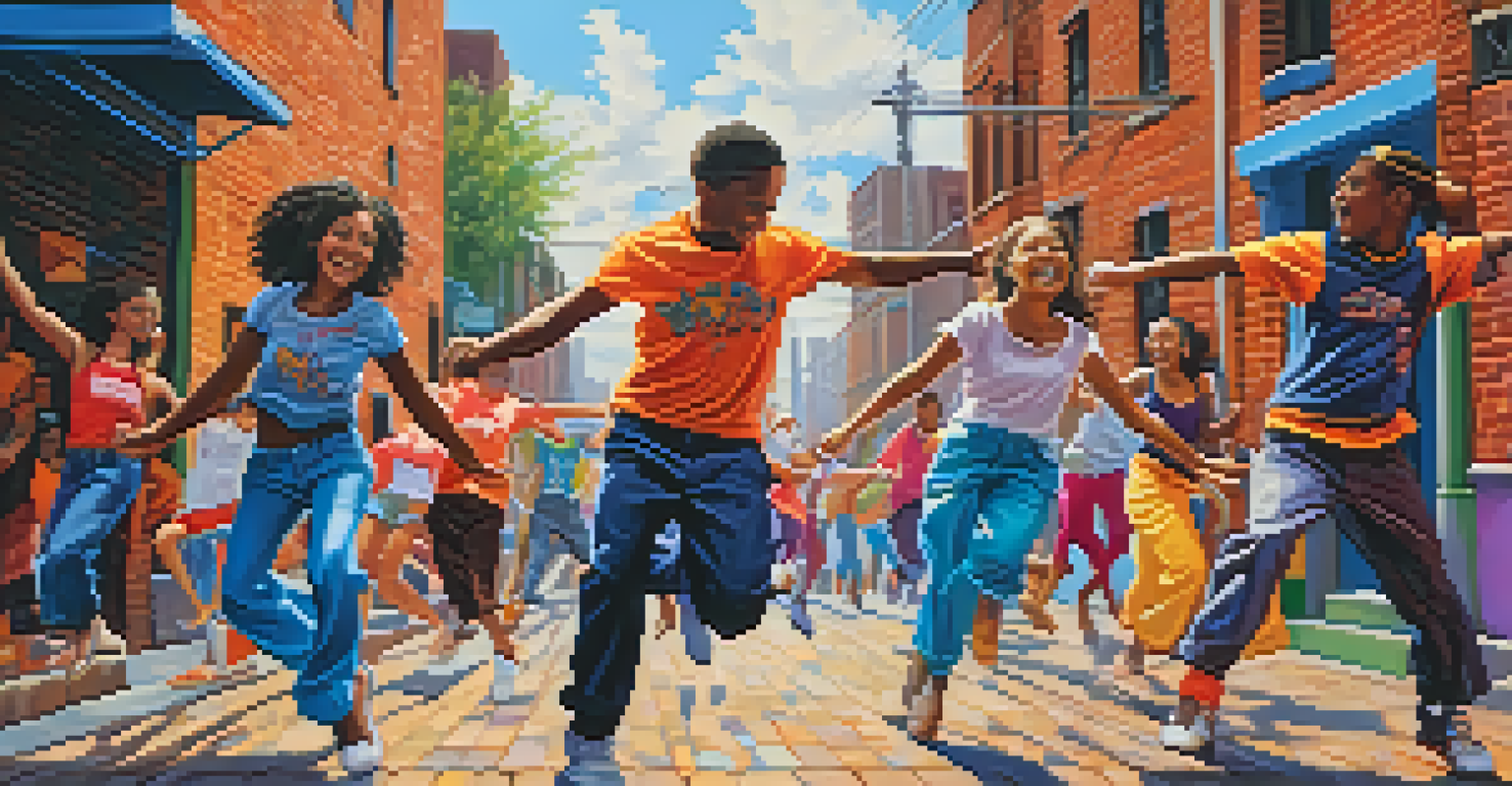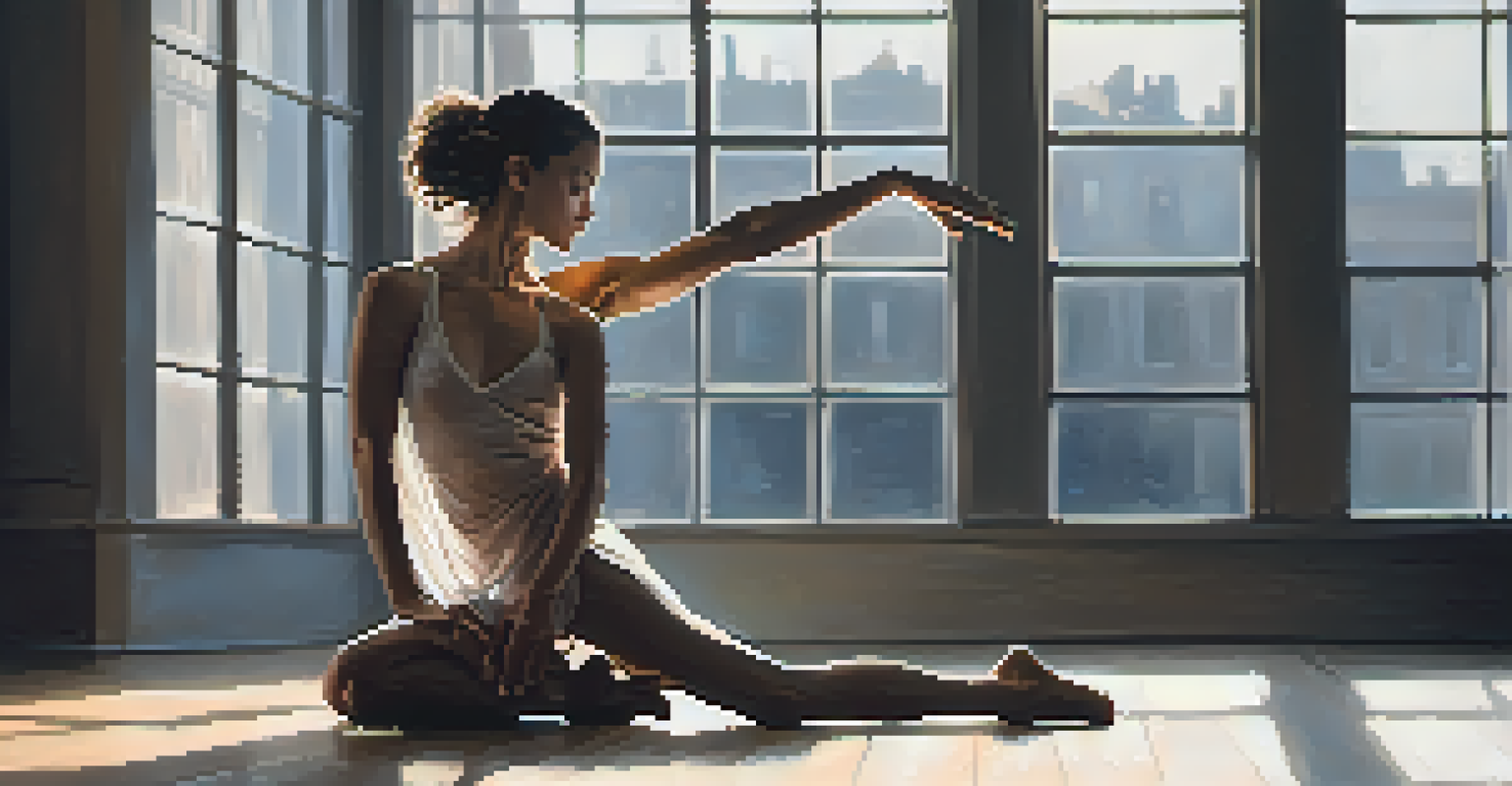The Role of Dance in Character Relationships in Movies

The Symbolism of Dance in Film Narratives
Dance often serves as a powerful storytelling tool in films, encapsulating emotions that words sometimes cannot express. For instance, a couple's first dance can symbolize their budding romance, while a frantic ballet sequence might illustrate a character's internal turmoil. These moments create a visual language that enhances the narrative, allowing audiences to connect with characters on a deeper level.
Dance is the hidden language of the soul.
By incorporating dance, filmmakers can convey complex relationships succinctly. Think about classic love stories like 'Dirty Dancing' where the dance sequences not only entertain but also illustrate the growth of the characters' bond. This symbolism helps to create a more immersive experience, engaging viewers in the characters' journeys.
In essence, dance acts as a bridge between the audience and the emotional landscape of the characters, making their experiences relatable. It invites viewers to interpret the relationships through movement, fostering a connection that transcends dialogue and plot.
Dance as a Reflection of Character Development
Throughout a film, dance can mirror a character's evolution, illustrating their emotional state and growth. For example, in 'La La Land', the dance sequences reflect the characters' dreams and disappointments, highlighting their struggles in love and career. This dynamic use of dance allows the audience to witness how relationships evolve over time.

When characters dance, their movements can reveal insecurities, aspirations, and shifts in their relationships. A confident character may showcase their growth through a bold dance, while a hesitant character might portray vulnerability through a timid performance. This contrast adds depth to character arcs and makes the relationships more engaging.
Dance Enhances Emotional Storytelling
Dance serves as a powerful storytelling tool, expressing emotions and deepening audience connections with characters.
Ultimately, dance serves as a visual metaphor for transformation, allowing viewers to witness the subtleties of character relationships. It's fascinating how a simple dance can encapsulate the essence of a character's journey, making it a vital element in storytelling.
Creating Connection Through Dance in Romantic Films
Romantic films often utilize dance to create intimate connections between characters, highlighting their chemistry. Iconic scenes, like the ballroom dance in 'Beauty and the Beast', demonstrate how physical movement can suggest attraction and emotional bonds. Such moments are often pivotal in developing the romantic narrative.
The only way to make sense out of change is to plunge into it, move with it, and join the dance.
Dance allows characters to express feelings that might otherwise remain unspoken. For instance, in 'Silver Linings Playbook', the dance competition scene becomes a catalyst for the characters' budding romance, showcasing how they begin to understand each other on a deeper level. This interplay between movement and emotion enriches the viewing experience.
As viewers, we can feel the tension and passion in these dance sequences, making them memorable. The physicality of dance not only entertains but also serves to deepen the emotional resonance of the characters' relationships.
Dance as a Tool for Conflict Resolution
In many films, dance serves as a means for characters to resolve conflicts, allowing them to confront their emotions in a tangible way. A great example is found in 'Footloose', where dance becomes a form of rebellion and self-expression against societal constraints. This use of movement highlights the power of dance in overcoming obstacles.
Through dance, characters can communicate their feelings without the need for dialogue, making it a unique method of conflict resolution. Scenes where characters dance together after an argument often signify reconciliation, showcasing the healing power of movement. This dynamic adds layers to character interactions and relationships.
Dance Reflects Character Growth
Through dance, characters' emotional states and development are visually mirrored, adding depth to their relationships.
Ultimately, dance can be a therapeutic outlet for characters, providing a release for pent-up emotions and fostering connection. It highlights how relationships can evolve through shared experiences, making the narrative more relatable.
Cultural Context and Its Influence on Dance Relationships
The cultural background of characters significantly influences how dance is portrayed in film. Different cultures have unique dance styles that reflect their traditions and values, which can enhance character relationships. For instance, in 'Coco', the vibrant dance sequences celebrate family and heritage, deepening the emotional ties among characters.
Using culturally specific dance forms can also create authenticity in storytelling. When characters engage in traditional dances, it not only showcases their backgrounds but also illustrates how their relationships are shaped by their cultural context. This adds depth to the narrative and invites audiences to appreciate diverse perspectives.
By integrating cultural elements into dance scenes, filmmakers can create a rich tapestry of relationships that resonate with viewers. This approach fosters understanding and appreciation, making the characters' journeys more impactful.
The Role of Choreography in Character Dynamics
Choreography is crucial in defining how characters interact through dance, shaping their relationships in meaningful ways. The choices made by choreographers can reflect the emotional undertones of the story, enhancing character dynamics. For example, a tightly synchronized routine can symbolize harmony, while contrasting movements may suggest conflict.
Furthermore, choreographed dance sequences can highlight individual character traits, showcasing their personalities through movement. A character who dances freely may embody spontaneity, while a more controlled dancer could represent discipline. These nuances enrich the narrative and provide insight into character relationships.
Cultural Influence on Dance Dynamics
Cultural backgrounds shape dance portrayals in films, enriching character relationships and enhancing storytelling authenticity.
By paying attention to choreography, filmmakers can elevate character interactions, making dance a powerful tool for storytelling. It’s fascinating how movement can convey so much about relationships, adding layers of meaning to the film.
Dance as a Catalyst for Character Connection
Dance often acts as a catalyst for connection between characters, creating moments that bring them closer together. In films like 'Mamma Mia!', the joyous dance sequences foster camaraderie and highlight the characters' shared experiences. These moments become pivotal in developing relationships and driving the narrative forward.
When characters engage in dance, it often breaks down barriers, allowing them to express their vulnerabilities and desires. This shared experience can lead to deeper emotional connections, making viewers root for their relationships. Dance becomes a universal language that transcends words, enabling characters to bond in unique ways.

Ultimately, the role of dance in character relationships is about fostering connection and understanding. These moments of movement not only entertain but also enrich the storytelling experience, making the characters' journeys more relatable and memorable.